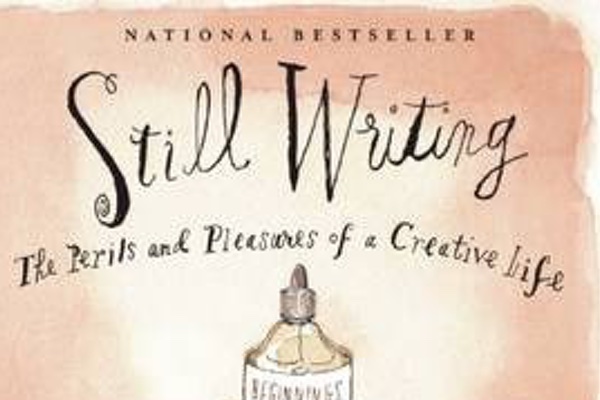Memoir: the Personal vs. the Universal
By Contributing Editor Richard Gilbert

“Demons haunt your pages because they already exist.”—Dani Shapiro
“Do what you love. Know your own bone; gnaw at it, bury it, unearth it, and gnaw it still.”—Henry David Thoreau
Neat sentiment, Henry David, and it seems apt for writer Dani Shapiro, who has quoted it herself. Her love is writing, and especially chewing over the past in memoir. Recently in the New York Times Book Review, however, Shapiro discussed the dilemma of being a serial memoirist:
When I write a book, I have no interest in telling all, the way I absolutely do long to while talking to a close friend. My interest is in telling precisely what the story requires. It is along the knife’s edge of this discipline that the story becomes larger, more likely to touch the ‘thread of the Universe,’ Emerson’s beautiful phrase. In this way, a writer might spiral ever deeper into one or two themes throughout a lifetime —theme, after all, being a literary term for obsession—while illuminating something new and electrifying each time.
But some readers of memoir are looking for secrets, for complete transparency on the part of the author, as if the point is confession, and the process of reading memoir, a voyeuristic one. This idea of transparency troubles me, and is, I think, at the root of the serial memoirist’s plight. My goal when I sit down to write out of my own circumstances is not to make myself transparent. In fact, I am building an edifice. Stone by stone, I am constructing a story. Brick by brick, I am learning what image, what memory belongs to what.”
Shapiro makes subtle and profound distinctions. Distinctions between publishing memoir and privately journaling. Between personal writing and mainstream journalism. Between life stories and idle gossip. Between settling scores and discovering deeper truths. This is invaluable in extending the conversation on memoir, and in helping refine understanding of the burgeoning genre.
Successful memoir’s paradox: it’s both achingly personal & totally universal.
The good writer seems to be writing about himself, but has his eye always on that thread of the Universe which runs through himself and all things.”—Ralph Waldo Emerson

Maybe she counts among her four memoirs referred to in the Times her latest book, which I’ve been reading, Still Writing: The Perils and Pleasures of a Creative Life. Her website says it’s “at once a memoir, meditation on the artistic process, and advice on craft . . .” I’m impressed by Shapiro’s frankness and depth. She addresses directly critics’ charges or anyone’s fear of wallowing, of having a different story than your siblings do, of inflicting on others your navel-gazing. Given this backdrop, and our societal and human interest in moving on, she seems rather brave. I flagged a couple passages on Page 135:
To write is to have an ongoing dialogue with your own pain. To scream to it, with it, from it. To know it—to know it cold. Whether you’re writing a biography of Abraham Lincoln, a philosophical treatise, or a work of fiction, you are facing your demons because they are there. To be alone in a room with yourself and the contents of your mind is, in effect, to go to this place, whether you intend to or not. . . .
The mess is holy. What we inherit—and how we come to understand what we inherit—is all we have to work with. There is beauty in what is. Every day, when I sit down to work, I travel to that place. Not because I’m a masochist. Not because I live in the past. But because my words are my pickaxe . . .”
Maybe this is why writers, or at least memoirists, get comfortable with using memories that might disturb others to broadcast. The wonder is why some writers—we’ve all read them—are not crippled by guilt or pain. The reasons for resilience must vary. But it seems to me that, at base, everyone must start with love for literary art. Love for its beauty in form and content, a beauty that rests finally on honesty.
That’s such a high bar! Implied in it is the highest honesty—the ability to see your story from different angles, to see another’s burden and story, to interrogate your own settled master narrative. I think this is what Shapiro means when, reflecting the influence of Buddhism, she quotes Jack Kornfield, author of A Path with Heart: A Guide Through the Perils and Promises of Spiritual Life:
all of life can be summed up in these three words: not always so.”
She mentions Steven Millhauser’s impressive New Yorker story, “Getting Closer,” about a nine-year-old boy’s sudden awareness of time—after which, everything for him is forever changed. Memoirists might well ask themselves, Shapiro suggests, why they’re telling the story now? What has changed? This of course points, once again, to the fair-minded writer at the desk now, struggling to understand, and gracefully share, the meaning of what happened to her so long ago.

